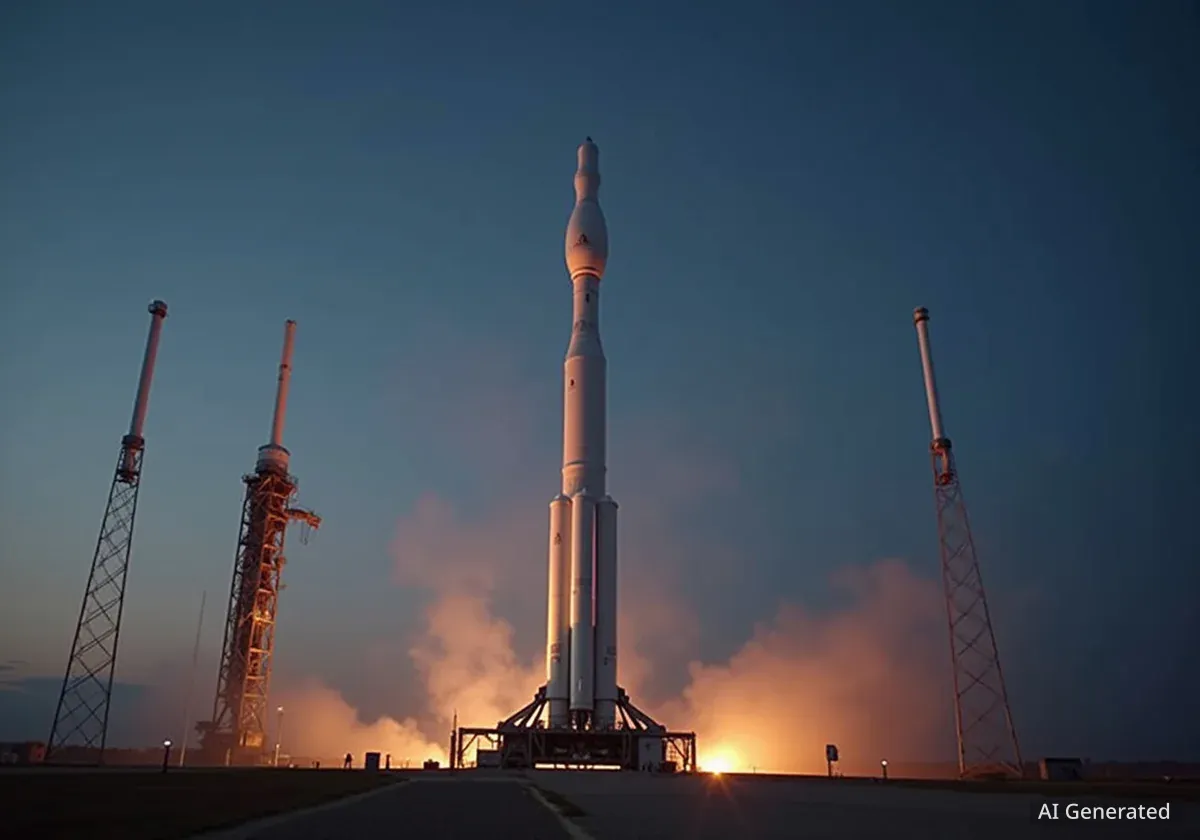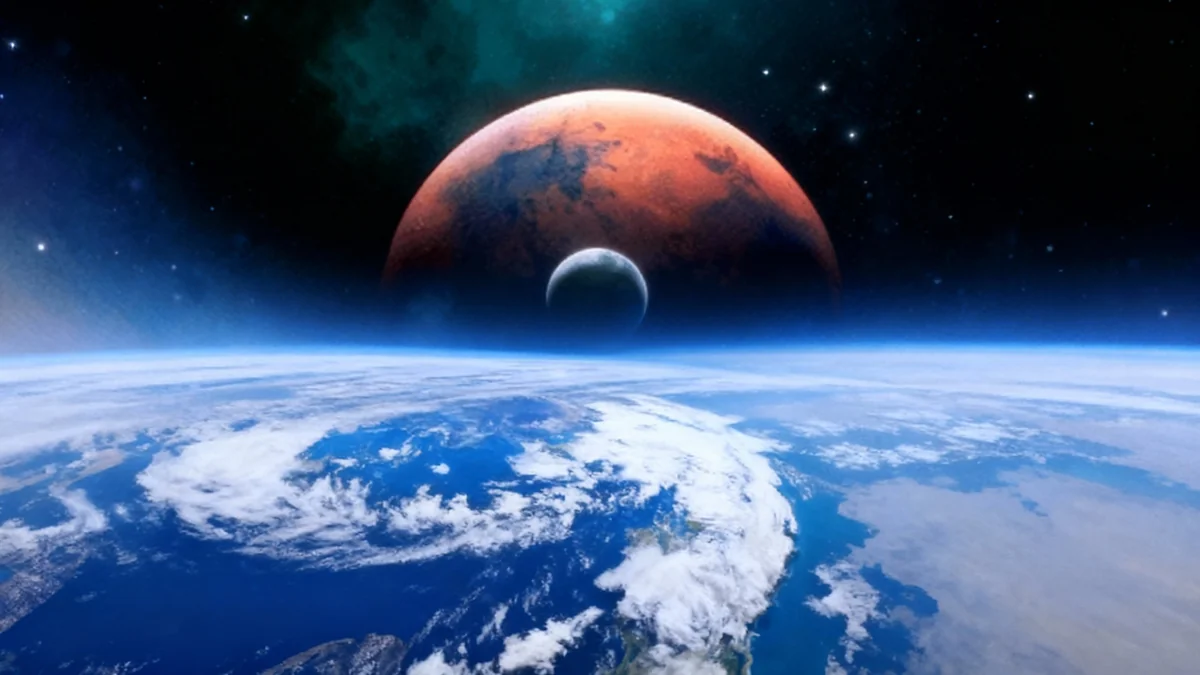A new international space race is underway, with Mars as the ultimate destination. As the United States' space agency, NASA, navigates internal challenges more than five decades after its historic Moon landing, China is rapidly advancing its own ambitious plans for manned missions to both the Moon and the Red Planet, setting the stage for a new era of geopolitical competition in space.
Key Takeaways
- A modern space race is emerging between the United States and China, with a long-term goal of sending humans to Mars.
- NASA faces significant hurdles, including inconsistent political objectives and complex project management, despite its historic achievements.
- China has demonstrated rapid progress with its successful lunar missions and the establishment of its own space station, indicating a strategic, long-term approach.
- The competition extends beyond national pride, involving technological dominance, national security, and economic opportunities in the growing space sector.
The Global Ambition for Mars
The goal of sending humans to Mars has re-entered the global spotlight, echoing the competitive spirit of the 20th-century space race. High-level political figures, including former U.S. President Donald Trump, have publicly stated the objective to "plant the stars and stripes on the planet Mars," signaling a renewed national interest in deep-space exploration.
This ambition is not unique to the United States. Nations around the world are increasingly viewing space as a critical domain for scientific discovery, economic development, and strategic influence. Mars, as the next logical step for human exploration beyond the Moon, represents the ultimate technological and logistical challenge.
Historical Context: The Apollo Legacy
The last time humans walked on the Moon was during the Apollo 17 mission in 1972. For over 50 years, human exploration has been confined to low-Earth orbit. The current push towards the Moon and Mars, through programs like NASA's Artemis, aims to build a sustainable presence in space that will serve as a stepping stone for future interplanetary missions.
NASA Navigates a Complex Landscape
Despite its unparalleled history of success, including the Apollo Moon landings and decades of robotic exploration throughout the solar system, NASA is currently facing a period of significant complexity. According to analyses from industry experts and former agency employees, the organization is navigating a challenging environment defined by shifting political priorities and large-scale project management issues.
One of the primary difficulties stems from the long-term nature of space exploration projects, which can span multiple presidential administrations. Changes in government can lead to altered objectives, budget reallocations, and strategic pivots, making it difficult to maintain consistent momentum on multi-decade goals like a manned mission to Mars.
The Role of Public-Private Partnerships
To address some of these challenges and foster innovation, NASA has increasingly relied on partnerships with private aerospace companies. This model has proven highly successful in low-Earth orbit, with companies like SpaceX providing crew and cargo transport to the International Space Station at a fraction of the cost of previous government-run programs.
However, for deep-space missions, NASA continues to lead the development of key hardware, such as the Space Launch System (SLS) rocket and the Orion spacecraft. While these systems are essential for the Artemis program, they have faced significant delays and budget overruns, which has drawn scrutiny and raised questions about the agency's ability to execute on its ambitious timelines.
By the Numbers: The Artemis Program
NASA's Artemis program aims to return astronauts to the lunar surface. The first uncrewed test flight, Artemis I, successfully launched in November 2022. The subsequent crewed missions, Artemis II (a lunar flyby) and Artemis III (the first crewed landing since 1972), are planned for the coming years, though timelines remain subject to change based on technical readiness.
China's Methodical Rise in Space Exploration
While the U.S. program adapts to a new era, China's national space program has been making steady and impressive progress. The China National Space Administration (CNSA) has executed a series of successful missions that demonstrate its growing capabilities and long-term strategic vision.
China's achievements in recent years are significant. The nation has successfully landed robotic rovers on both the Moon and Mars, becoming only the second country to operate a rover on the Martian surface. Furthermore, its Chang'e lunar program successfully returned lunar samples to Earth for the first time in over 40 years.
The methodical, step-by-step approach of the Chinese space program is a clear indicator of its long-term commitment. Each mission builds upon the last, systematically developing the technology and operational experience needed for more complex endeavors.
The Tiangong Space Station and Lunar Ambitions
A cornerstone of China's space infrastructure is the Tiangong space station, which is now permanently crewed by Chinese astronauts in low-Earth orbit. This platform provides China with invaluable experience in long-duration spaceflight, which is a critical prerequisite for future missions to the Moon and Mars.
Looking ahead, China has been clear about its lunar ambitions. It plans to establish an International Lunar Research Station (ILRS) at the Moon's south pole, a project it is developing with international partners, including Russia. The stated goal is to have the foundational elements of this base in place by the 2030s, potentially leading to a crewed lunar landing within the same decade.
A New Era of Competition and Collaboration
The dynamic between the United States and China defines the modern space race. Unlike the Cold War-era competition with the Soviet Union, today's landscape is more complex, involving a mix of national rivalry, scientific collaboration, and a burgeoning commercial space industry.
The outcome of this race is about more than just planting a flag. Leadership in space translates to technological superiority, economic advantages, and the ability to shape the international norms and standards that will govern future activities on the Moon, Mars, and beyond.
As both nations push forward, the central question remains: who will be the first to achieve the monumental goal of landing humans on the Red Planet? The answer will depend on sustained political will, technological innovation, and the ability to overcome the immense challenges of interplanetary travel.





